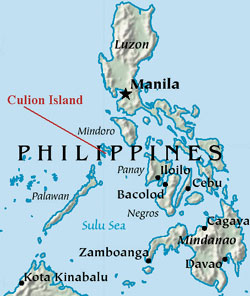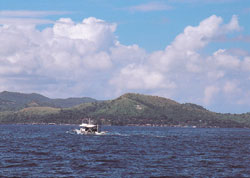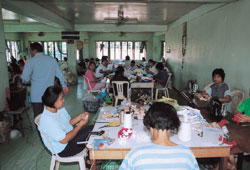| THE SPECIAL AMBASSADOR'S JOURNAL, 2002 |
| Malaysia and the Philippines |
| In this issue, I will talk about two of the countries I visited
last year. Although leprosy elimination has been achieved in
both of these places, as I say time and again, elimination of
the bacilli is only the first stage of the path we are walking.
The next step is the elimination of the stigma that has
surrounded the disease for millennia. This has the potential
to be an extremely persistent problem, but in the two
countries below, the governments, the medical centers and
the people themselves are working hard and are fast
approaching the ideal: societies in which leprosy is seen as
nothing more than an easily curable skin disease; societies in
which those who have contracted it are viewed in the same
light as people who have broken their legs or burned their
arms; societies where people affected by leprosy have a voice
and place. |

|
| In June, I visited the
Sungai Buloh Hospital in
Malaysia. This hospital
was erected as the
National Leprosy Control
Centre in 1930 and today
has been converted to a
general hospital. The
facility forms the center
for a settlement of former
leprosy patients. It is home to more than 200 families.
There, they grow plants and vegetables of all varieties
in an attempt to become as self-sufficient as possible.
In this, they have succeeded admirably. The settlement
is situated about 25 km from the city of Kuala Lumpur,
and people flock there from the city and surrounding
towns in order to buy its plants and vegetables. I was
impressed by the effect that this continual exchange is
having on the elimination of stigma. Reintegration has
begun happening here from both sides. |

Culion Island
|
Then in November, I visited the Philippines, where
I went to a very
special place in
the world of
leprosy -
Culion Island.
The island once
hosted the
world's largest leprosy colony, established in 1906 under the administration of the United States. Over the years,
nearly 50,000 leprosy patients were forcibly isolated on
the island. Today, it is a municipality with a population
of 16,000 people - former patients, medical staff and
the descendants of both. The first mayor of Culion
Municipality has himself overcome the challenges of
leprosy - something he says is important in
establishing the traditions of the community. The
island has an impressive museum as well, housing a
collection of valuable historical records and artifacts
dating from the early days of the colony.
While in the Philippines, I also visited the Jose
Rodriguez Memorial Hansen's Disease Hospital in
Tala. Jose Rodrigues has today been converted into a
general hospital but I found that the staff are still very
keen to aid leprosy patients and to rehabilitate those
with deformities. One encouraging program that they
have is a doll factory for former patients of leprosy.
The dolls produced here are of the highest quality and
are a very popular item in the surrounding community. |

Doll-making at a leprosy hospital in the Philippines
|
The last place I went in the country was the island
of Cebu,
where we
visited the
Leonard
Wood
Memorial
Laboratory
and the
Eversley
Childs
Sanatorium. The former is known for its high
standards of scientific research, and has played a major
role in the development of MDT as well as in follow-up
studies of its effectiveness. I was strongly impressed
by the devotion of the staff.
In both countries, leprosy has been eliminated as a
public health problem. Additionally, the general health
services have taken over the work on the disease. And
perhaps most importantly, they are finding ways to
erase the stigma that has surrounded the disease for
millennia. They showed me that leprosy is truly a
curable disease, both clinically and socially. They gave
me inspiration to continue my work. |
|